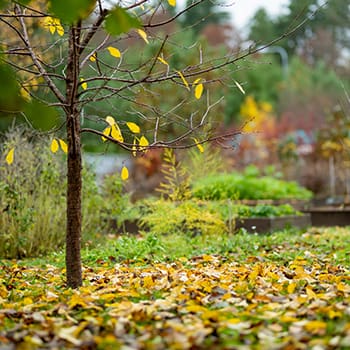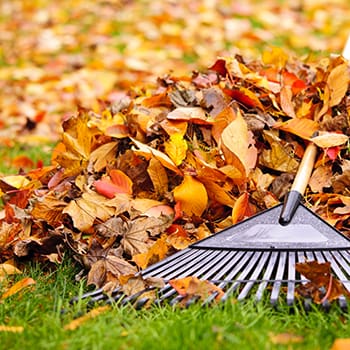In some areas of the world, you’re absolutely required to rake up fallen leaves and have them disposed of by your local authority figures. And if that fits you and your current situation, friend, I am so very very sorry.
For the rest of us, the idea of removing our fallen autumn leaves is a terrible thing. For some, they may even consider it downright destructive! Worse, it is potentially costly to our gardens and so much else. Your lawn is as green as it is because of those fallen leaves. Your woodlands? Same thing with them.
Today, we’ll talk about what falling leaves do for the ground they’re covering and why we should do more than sweep them into a ditch and burn them, Let’s get started.
Permacompost
Fallen leaves are an ideal source of “brown” waste for your compost pile.
New to composting? Brown waste is typically harder to break down but usually very rich in nutrients. It also offers a great deal of bulk to your compost, rather than the green waste that will largely crumble and lose plenty of mass due to the loss of water within the green part.
If you do have to rake up your leaves and you have a compost pile, our suggestion is to toss your leaves onto your compost pile. This will leave the pile somewhat acidic for a brief period, but if you manage it correctly and add green matter to it, you’ll be back in balance in no time.
The Good Friends
Let’s be honest, we don’t often speak about bugs in a friendly sense when we’re dealing with our gardens. That should change.
Bugs make the world work. They feed our bird friends, their carcasses supply so much fertilizer, and their droppings do, too. They keep the soil aerated. Many take care of predatory insects that will ruin our crops and have no interest in them in and of themselves; and all the better for it.
Where do bugs go when the weather starts to get colder? You don’t see most insects during the winter; why is that?
Most insects are very sensitive to cold temperatures. You’ll see them freeze to death long before you see them overheating in almost all cases. Therefore, they need somewhere warm to settle in for the colder months. I wonder where that is?
If you settle in and read about what fallen leaves do for the natural world, you’ll probably be pretty horrified at the idea of removing them from your own property. For instance, I haven’t raked leaves in years and I have very few crop-related predatory insects lurking around. Instead, I’ve settled in and allowed a couple of years of leaves to rest everywhere that they fall. This offers a place for insects to hide out throughout the colder time of the year and helps to preserve the beneficial bugs that are already on my property.
Or, in some cases, it gives a place for seasonal insects to lay their eggs. Indeed, many beneficial bugs lay their eggs in a warm spot where the eggs can hide throughout the cold season. The adults pass away in the cold due to evolutionary traits and the eggs hatch in the spring, offering a new generation to do what they do best; take care of your crops the natural way.
Leaving The Fallen Leaves To Rot
Brown compost like fallen leaves is incredibly important for woodlands and other tree-y areas. They give fertilizer back to the tree they fell from, they offer the small plants around the tree fertilizer too, and, over the years, they offer more mass to the area that the tree is clinging to. This means the likelihood of the tree being knocked over in high winds is smaller. Always a nice perk.
Falling For Them
Perhaps one of the biggest problems is that we consider fallen leaves to be an unsightly mess if you’re working in a smaller area. If you only have a small yard, you may even end up overrun with leaves.
It’s no fun to have to hunt through leaves ankle-deep just to find where your dog has gone potty and instead, find it with your shoe.
So what do you do in this case while preserving the natural order, the bugs, and everything else we’ve mentioned in this article? It’s tricky. If all you have is a small lawn with nothing but grass and a couple of trees dumping their leaves on your property, you may be able to get by renting a mulcher, loading the leaves into it, and capturing the bits and pieces with trash bags. Then you can use this fresh mulch, which will break down much more quickly than full-sized leaves, to spread around the trees.
This takes away the “unsightly” factor and also keeps you out of trouble if you’re still dealing with an HOA or neighbors who decide that your business is actually their business. In a pinch, you can also do this with your mower but be very careful, there can be anything hidden in your pile of leaves and we cannot be held responsible for injuries if you choose this path.
Personally, I love the way that a field looks when covered with strewn, colorful fall leaves. I like watching them slowly crumple beneath the snow and ice and disappear as the spring growth begins to poke through the soil in March or April. Through naturalizing my land (some would call it “re-wilding”) but that terminology feels strange to say, in my opinion), I have hardier plants, fewer fallen trees, and fewer disease and crop-predatory insects overall.
What could be better than that?
And it’s all thanks to our fallen leaf friends.
Final Thoughts
What do you do with your fallen leaves? Are there laws in your area that mandate what you must or must not do with them? Leave a comment below and, as always, Happy Gardening. And may we all have a magical, wonderful autumn, too!
You may also like:
Wild Edibles You Should Forage This Fall
If You See This Plant in Your Backyard, Burn It Immediately! (Video)
25 Basic Life Skills That Should Be Taught in School (But Aren’t)
What Happens If You Sprinkle Cinnamon In Your Garden
10 Old Appliances We’ll All Be Using Again Soon









